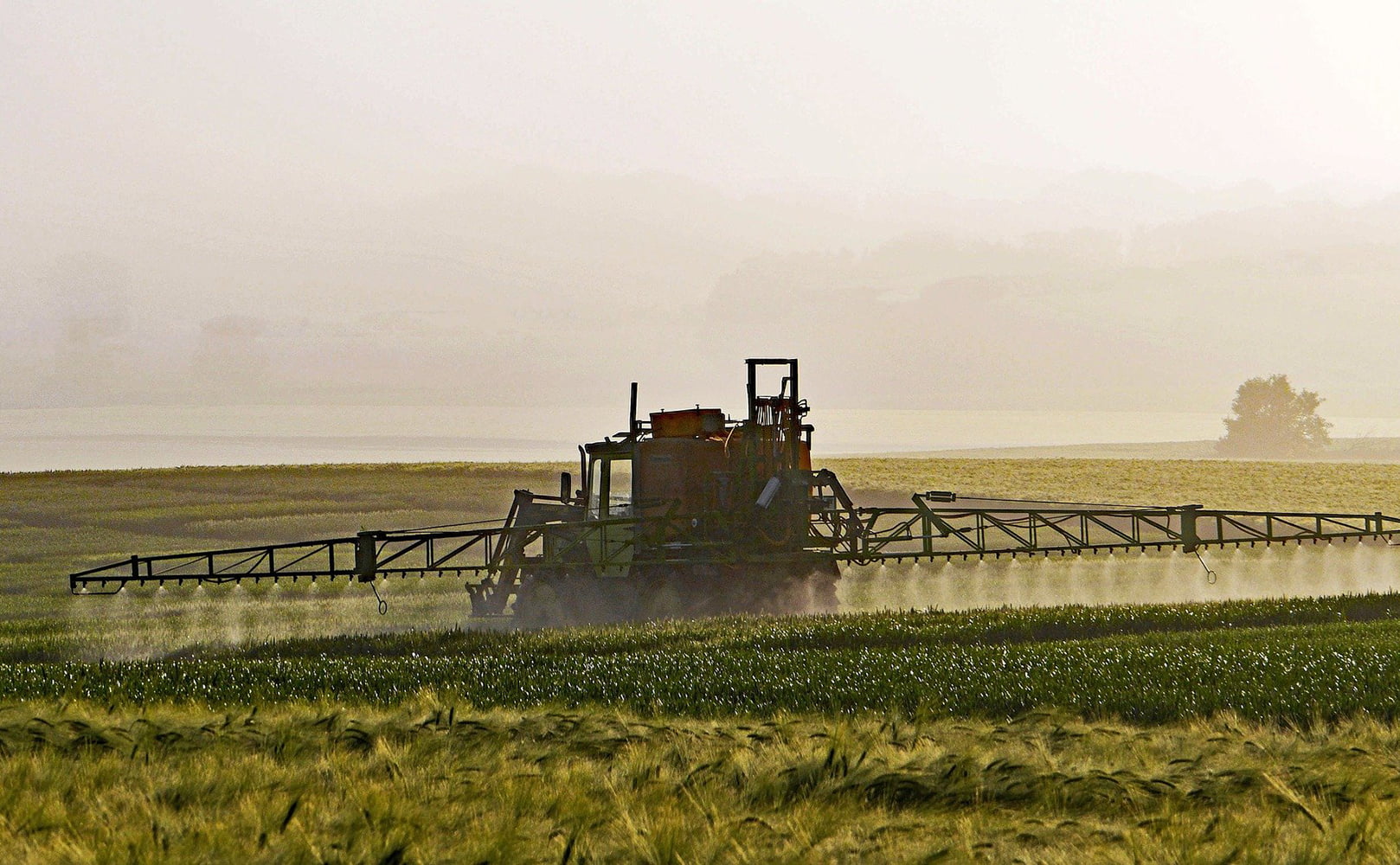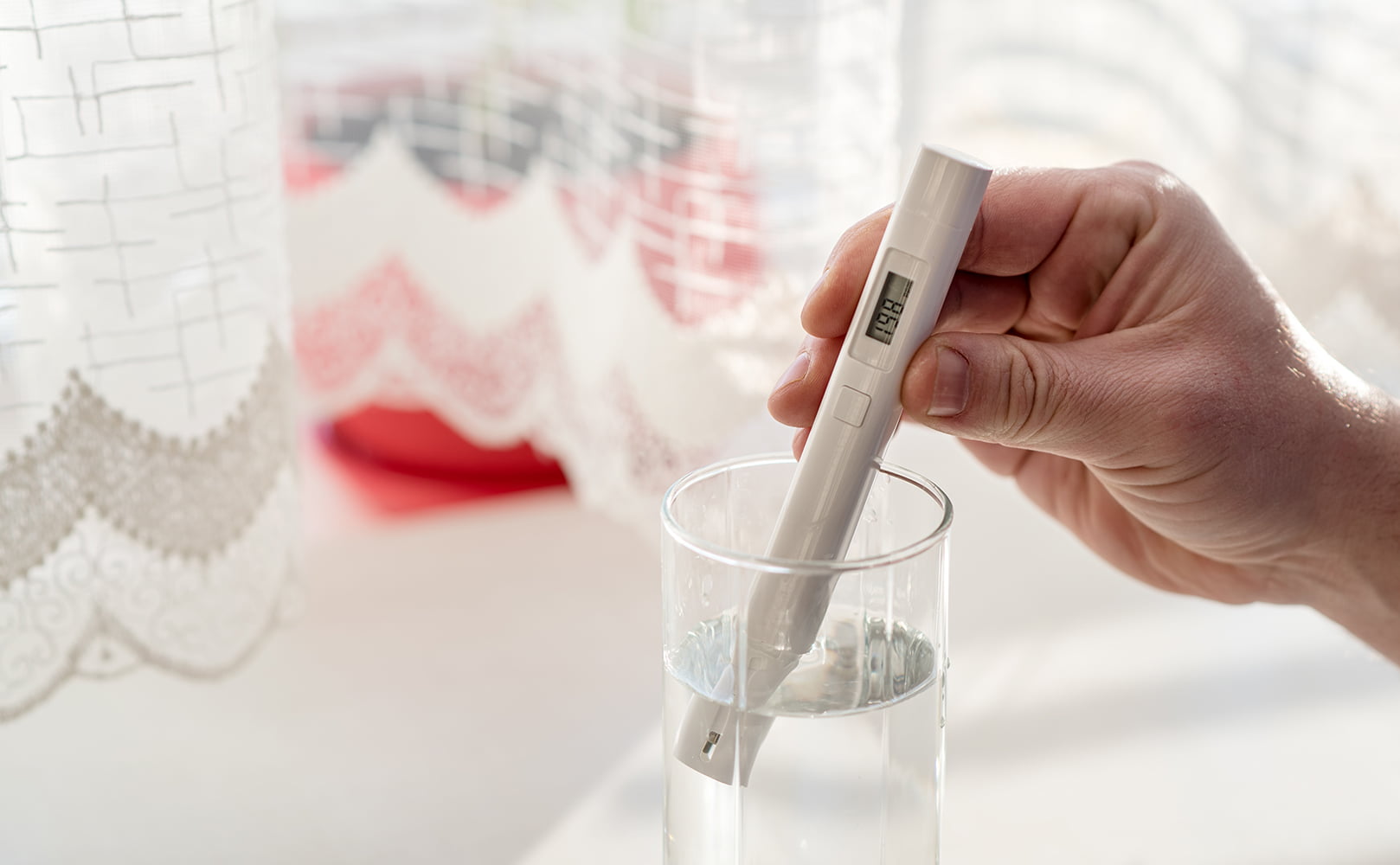What Is the Meaning of TDS in RO Water? Find Out Here!
Written by: Alexandra Uta // Last Updated: Aug 7, 2023
This page may contain affiliate links. If you buy a product or service through such a link we earn a commission at no extra cost to you. Learn more.
You may have heard the term total dissolved solids (TDS) referring to water quality, but when it comes to reverse osmosis water, TDS is of particular importance.
RO membranes are highly effective at removing TDS from water, and as a result, RO water has some of the lowest TDS readings of any water filtration method. As such, measuring the TDS of your RO water is one way to determine the effectiveness of your filtration system.
Let’s take a closer look at how TDS works in reference to RO systems and some of the factors that can affect TDS levels.
Key Takeaways
- TDS is a measure of the level of all dissolved substances contained in RO water.
- While TDS alone doesn’t give you that much information on water quality, when it comes to RO water, TDS is a useful measurement that gives you an idea of how well the filtration process is running.
- A properly functioning RO system will remove somewhere around 90% of TDS from feed water or more. This often results in a TDS level of 10 to 50 ppm for a typical RO system.
- The exact TDS figure will vary depending on factors like feed water TDS, the age and condition of the membrane, water pressure, and water temperature.
What Is the Meaning of TDS in RO Water?
So, what is the meaning of TDS in RO water?
The full form of “TDS” is “total dissolved solids”. As such, TDS refers to the level of all dissolved substances in water. This includes both harmful contaminants as well as healthy impurities like magnesium and calcium.
RO systems are exceptional at removing TDS from water – so effective that you can expect as much as a 95-99% reduction in TDS after running water through a reverse osmosis system.
That’s why measuring the TDS level in your feed water and then comparing it to the TDS of your output RO water is a useful way to test the effectiveness of your filtration process without professional water testing.
What’s TDS? What’s Total Dissolved Solids?
TDS or total dissolved solids include both organic and inorganic matter and can vary in size from molecular to micro-granular. These substances include heavy metals, minerals, salts, pesticides, water disinfectants, etc.
Types and Sources of Total Dissolved Solids
It’s important to keep in mind that TDS levels only give a reading of the level of overall dissolved solids in water but don’t tell you anything about their content. As a result, higher TDS water doesn’t necessarily indicate poor quality, it can simply indicate higher mineral levels.
That said, total dissolved solids can work their way into your water in several ways.
- The most common source of TDS in drinking water is contact with rock formations. Mineral water absorbs some of these minerals through prolonged contact, and as a result, it often has a TDS level of about 400 to 650 ppm. While this is higher when compared with other water sources, as the dissolved substances are healthy minerals like calcium and magnesium, the TDS level is not a cause for concern.
- Contact with limestone or salt deposits will also increase TDS levels by imparting carbonate or sodium into water. Again, these dissolved solids are essentially harmless but will alter the water’s taste.
- Other more concerning sources of TDS are contact with sewage, agricultural runoff, storm overflow, industrial and chemical runoff, and pipe leaching.
How Reverse Osmosis Reduces TDS
Reverse osmosis reduces TDS levels mainly through its ultra-fine RO membrane. RO systems will remove somewhere in the neighborhood of 80% to 99% of a given dissolved solid, and as a result, the final product will be exceptionally low in TDS.
After passing through a well-functioning RO system, you can expect reverse osmosis water to have a TDS reading somewhere in the range of 10 to 50 ppm, making it one of the most effective methods of reduction.
It’s important to note that the exact TDS level of RO water will depend on the TDS of the feed water, as well as the condition of the RO membrane. Water pressure and temperature will also have an effect, as low pressure and high temperature will both negatively affect salt rejection.
Other Methods to Filter TDS
While RO filtration is highly effective at reducing TDS, there are several other methods of reducing or eliminating TDS in water.
One of the most effective ways to reduce TDS is through deionization. The process involves passing water through hydrogen-cation and hydroxide-anion resins (any cations in the water are replaced with H+ ions; any anions are replaced with OH− ions).
Deionization is typically paired with reverse osmosis filtration as reverse osmosis is capable of removing non-ionic organic contaminants. When combined, these two methods can achieve a true 0 ppm TDS.
Another highly effective method of reducing TDS is through distillation. Distilling water is a simple filtration method that involves boiling contaminated water to form water vapor, which leaves behind all impurities.
How to Measure TDS in RO Water
There are two common methods of measuring the TDS in RO water: by using a TDS meter, or with filter paper.
TDS Meter
A TDS meter is a small electronic device that measures TDS levels using electrical conductivity. They will give you a TDS reading in parts per million (ppm) or milligrams per liter (mg/L) – which are one and the same.
It’s important to note that while TDS meters will give you an accurate TDS level reading, they don’t tell you anything about the specific substances contained in your water.
Filter Paper
Measuring TDS using filter paper is an old-school method that involves a bit more legwork but works nonetheless. To perform this method, you’ll need a clean glass container, filter paper, a clean evaporating dish, a stirring stick, a pipette, and a digital scale.
To measure TDS using filter paper follow these steps:
- First, weigh the evaporating dish and write down the figure.
- Next, stir the water sample thoroughly to ensure the dissolved solids are equally dispersed.
- Use the pipette to draw a 50 ml sample from the stirred water sample.
- Pour the sample into the container through the filter paper. Be sure to repeat the process at least 3 times to ensure the dissolved solids are absorbed into the filter paper.
- Transfer the filter paper to the evaporating dish.
- Now weigh the evaporating dish with the extracted filtrate and record the figure.
The formula for water TDS:
TDS = (Dish Weight with Filter in mg – Empty Evaporating Dish in mg) x 1000 / Water Sample in mg
Why Is Measuring TDS in RO Water Important?
Generally speaking, TDS alone is not that important a measurement when it comes to determining drinking water quality. High-quality water with significant mineral content will have a high TDS level, while water with problematic contaminants can have a low TDS reading.
That said, when it comes to RO water, TDS is a useful measurement for determining the effectiveness of the filtration process. If a reverse osmosis system is functioning correctly, an 80% to 90% plus reduction in TDS should be expected.
To conduct this test, simply measure the TDS of your feed water, and then compare the number to the TDS of your filtered RO water.
Effects of Dissolved Solids in Water – Safe or Harmful?
The health effects of dissolved solids in water depend on the type of the solids. Magnesium and calcium are not harmful and can be a good source of essential minerals. On the other hand, if the solids are toxic chemicals or heavy metals like lead, there is potential for many health issues.
The most noticeable difference in water with high TDS levels is a more bitter or salty taste, which is why TDS should be considered an aesthetic water factor. High-TDS water can also leave residues and scale on water fixtures and home appliances. Another potential issue is reduced water filtration efficiency from clogging the filters and membrane.
What’s the Ideal TDS in Reverse Osmosis Drinking Water?
There is no need to aim for 0 TDS when it comes to reverse osmosis water. As mentioned previously, RO systems will remove somewhere in the range of 90% of TDS from feed water. Even if your system is working optimally, you’ll still be left with some TDS in your RO water.
RO water will typically have a TDS of 10 to 50 ppm, although this can vary based on feed water TDS. This is a good range to shoot for, as nearly all dissolved particles will have been removed at these levels.
Official Guidelines
According to the EPA, water with a TDS level of 500 ppm is appropriate and anything above 1,000 ppm is considered potentially dangerous. According to the WHO, any water with a TDS level above 1,200 is unacceptable.
These ranges are far above what you can expect when using an RO system, so there isn’t much to worry about.
Why Do I Have High TDS in My RO Water?
If your RO water measures high in TDS, there are several potential factors to consider.
- Feed Water TDS: Your feed water TDS is the most important factor when it comes to your final TDS reading. If the feed water TDS is extremely high, then your RO water will inevitably have higher TDS as well.
- Feed Water Pressure: RO systems require a certain water pressure to work properly. Generally, 40 psi is the absolute minimum and 60 psi is optimal. If the pressure is too low, the membrane won’t filter properly, and the TDS of your RO water will be elevated.
- Feed Water Temperature: A high water temperature will cause the RO membrane pores to expand, which will allow more dissolved solids to pass through.
- Membrane Condition: Old or damaged RO membranes will remove fewer dissolved particles than new ones, resulting in a higher RO water TDS.
- TDS Creep: When you don’t use your RO system for an extended period, the pressure in the membrane will equalize – resulting in more solids passing through. This is known as TDS creep, which is why you should discard the first tank when measuring TDS if you haven’t used the system in some time.
- Brand New Membrane or Pre-Filters: Brand new membranes need to be hydrated before they start working optimally, while brand new pre-filters must be flushed to remove carbon fiber and other dust. Make sure to flush the first tank or two after installing a new membrane or pre-filter to avoid a faulty high TDS reading.
- Issues with Drain Line or Flow Restrictor: If the RO system’s drain line is clogged or its flow restrictor is defective, then the system won’t function correctly and the TDS figure may be high.
If you have any questions about the meaning of TDS in RO water purifiers please don’t hesitate to leave a comment below!
Information provided on BOS is for educational purposes only. The products and services we review may not be right for your individual circumstances.
We adhere to strict editorial guidelines. Rest assured, the opinions expressed have not been provided, reviewed, or otherwise endorsed by our partners – they are unbiased, independent, and the author’s alone. Our licensed experts fact-check all content for accuracy. It is accurate as of the date posted and to the best of our knowledge.



